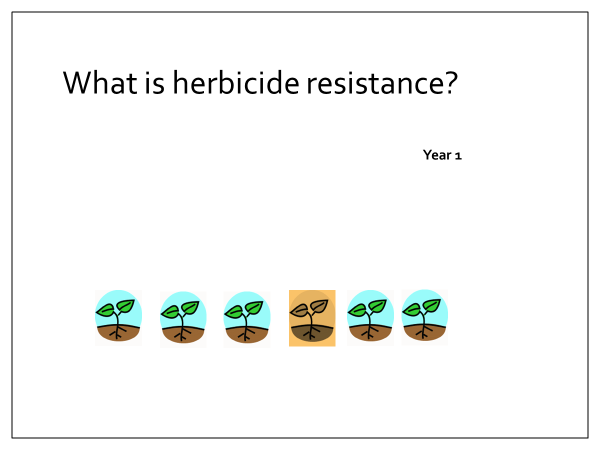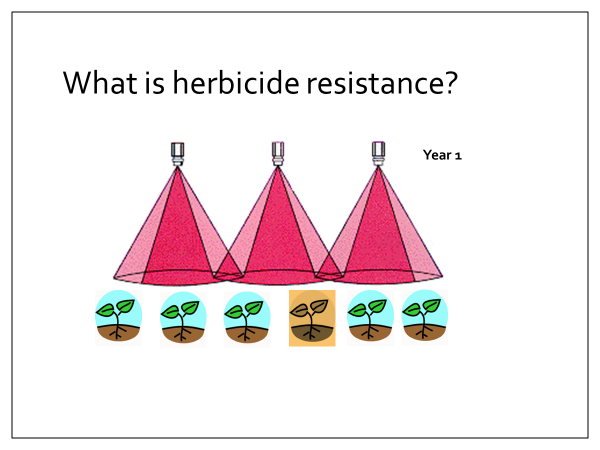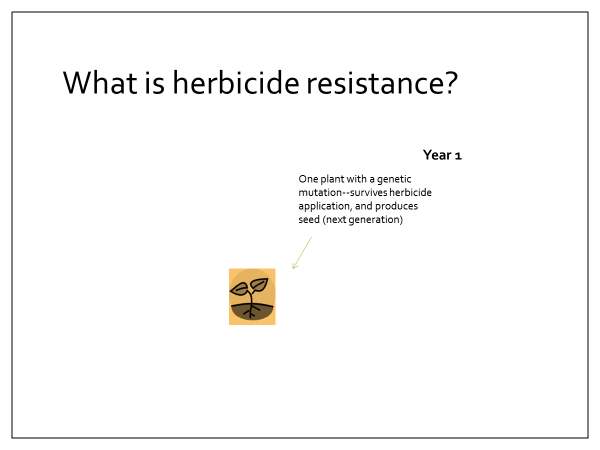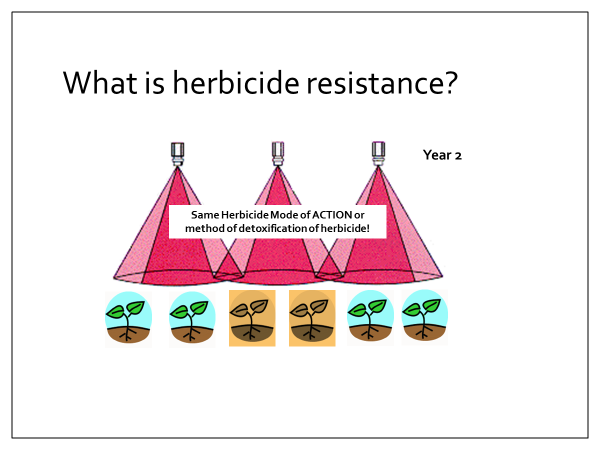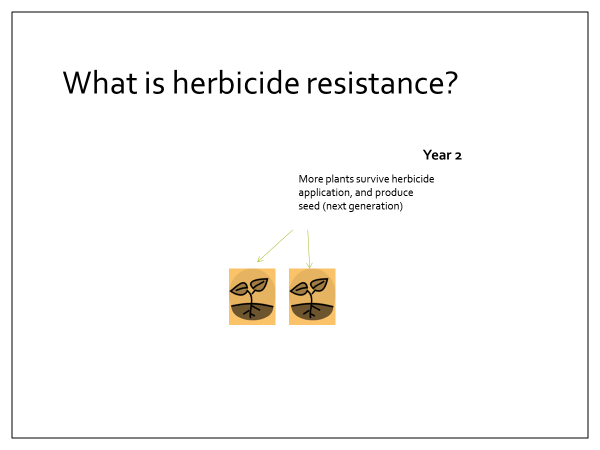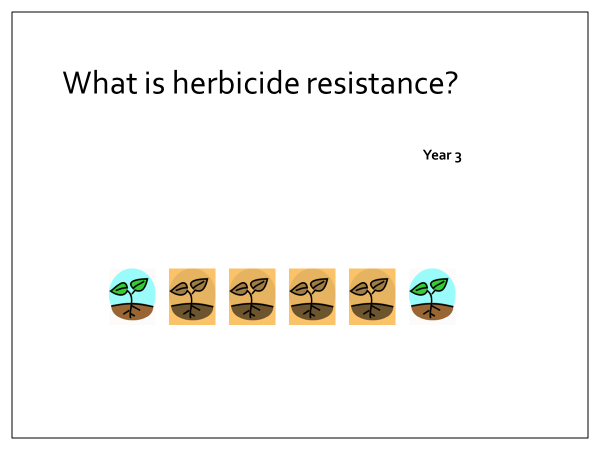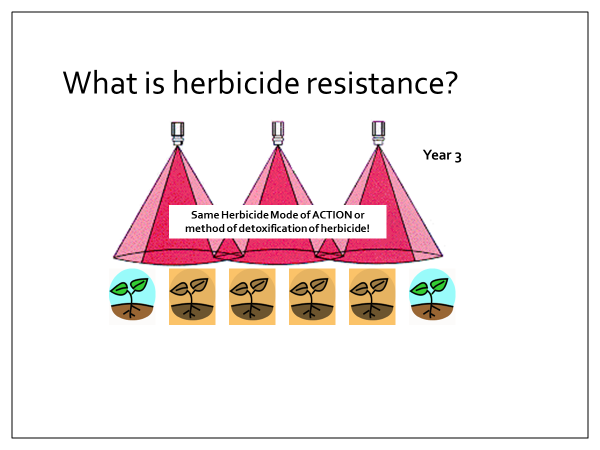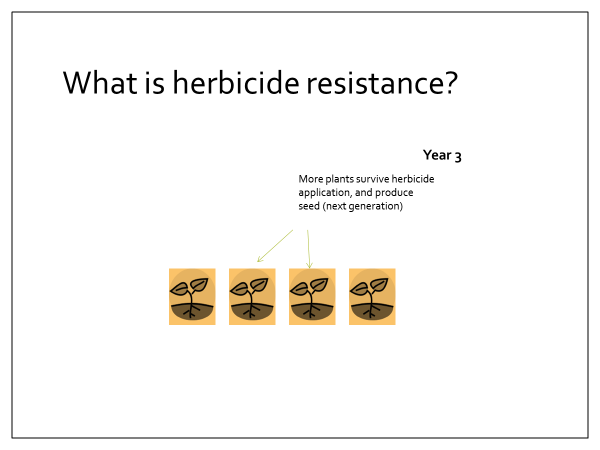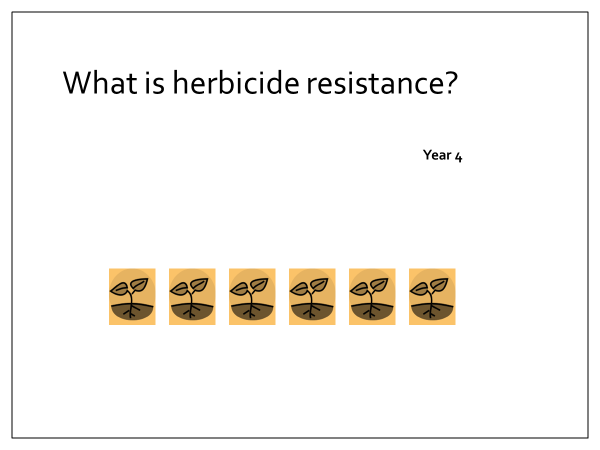We talk about herbicide resistance all of the time in California rice, but how does it evolve in a field? Understanding how herbicide management selects for resistant populations is an important part of preventing the problem from occurring in your fields.
We have many weed species in CA rice that are confirmed to be herbicide resistant. The major herbicide-resistant species are late watergrass, early watergrass, barnyardgrass, smallflower umbrella sedge, ricefield bulrush (roughseed), sprangletop, and redstem. For this illustration of how herbicide resistance evolves in a field, we use redstem as our example.
Year 1, Beginning of season: A population of redstem is found in a field and are emerging at the beginning of the season. In this illustration, the plants with the blue background are naturally susceptible to an herbicide (Granite SC). The plants with the yellow background are naturally herbicide resistant to Granite SC. There is nothing that the grower has done at this point to select for resistance. The genes that make the plant resistant are naturally found in the redstem population in the field.
Year 1, Mid-season: The grower applies Granite SC.
Year 1, End of season: One herbicide resistant plant survives. This plant goes on to produce seed, and the seeds are deposited onto the soil surface, where they are tilled into the soil seedbank at the end of the season.
Year 2, Beginning of season: The redstem population emerges from the soil at the beginning of the season. Because there are more seeds in the soil seedbank from the resistant plants, more of the emerged plants are resistant to Granite SC this year (yellow background = herbicide resistant).
Year 2, Mid-season: The grower again applies Granite SC or another herbicide with the same mode of action (Regiment, Halomax/Sandea or Londax).
Year 2, End of season: All of the herbicide resistant plants again survive the herbicide application. Again, they go on to produce seed, and the seeds are deposited onto the soil surface, where they are tilled into the soil seedbank.
Year 3, Beginning of season: The redstem population emerges from the soil at the beginning of the season. There are even more herbicide resistant plants than the previous 2 years, as the proportion of herbicide resistant seed in the soil has increased.
Year 3, Mid-season: For the third year,the grower applies Granite SC or another herbicide with the same mode of action (Regiment, Halomax/Sandea or Londax).
Year 3, End of season: All of the herbicide resistant plants again survive the herbicide application. Again, they go on to produce seed, and the seeds are deposited onto the soil surface, where they are tilled into the soil seedbank.
Year 4, Beginning of season: The redstem population emerges from the soil at the beginning of the season. This year, all of the plants are herbicide resistant, as the soil seedbank contains mostly herbicide resistant redstem seed.
The illustrations above are an example of how herbicide resistance evolves and is selected for in a field. A grower may not notice during the first year or two, as there are just a few plants that survive the herbicide applications. However, if the grower continues to use the same herbicide year after year, or the same herbicide mode of action, eventually, the population of redstem (or another weed species) will shift to become composed of only plants that are herbicide resistant.
The best way to prevent the development of herbicide resistance is to rotate herbicide modes of action, both between seasons and within seasons. Refer to the UC Herbicide Susceptibility Chart for CA rice when planning an herbicide program.
Author - CE Rice and Wild Rice Advisor, Master Gardener Advisor, UC Integrated Pest Management Program Afilliate
Attached Files:
